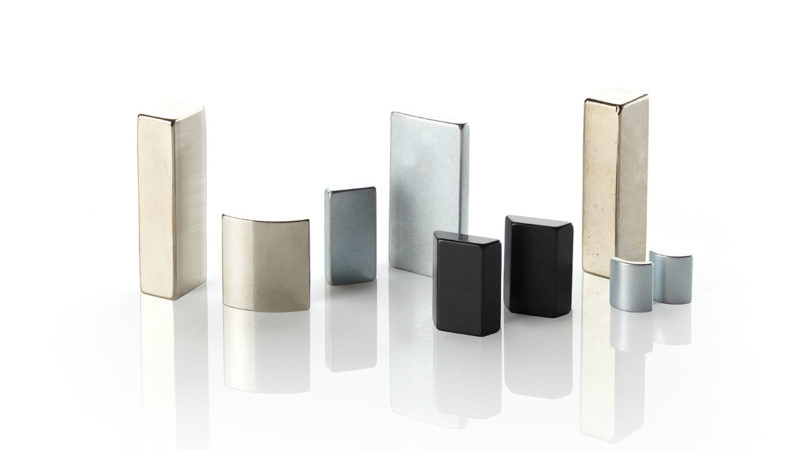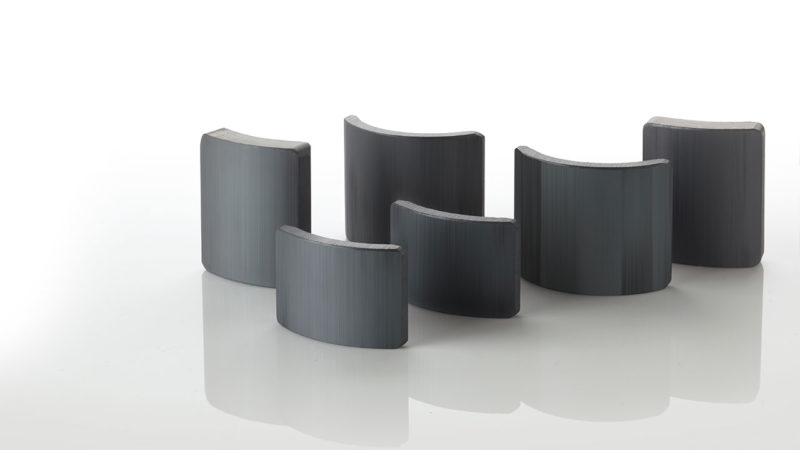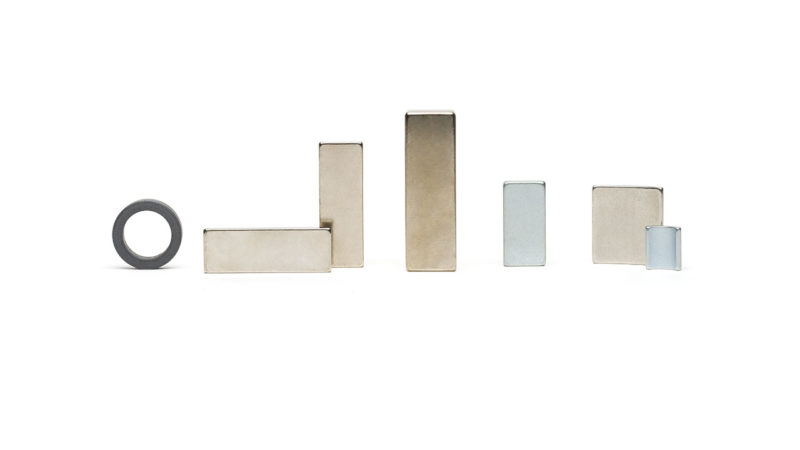
Permanent magnets
In common asynchronous motors, the rotor current is induced by the electromagnetic field generated by the stator. In this way, the rotor and stator produce two opposite electromagnetic fields, the interaction of which generates motion. However, the rotation speed remains almost constant during this process. Additionally, rotor currents generally result in leaks that decrease the performance of the machine.
To overcome these inefficiencies of the traditional copper-wound electric motor, permanent magnets were introduced that cause the rotor to move without the need for induced currents. This feature makes electric machines more efficient, allows their speed of rotation to be controlled and improves the torque at low RPM, given that there is no gearbox.
The main advantages of using permanent magnets are:
- efficiency
- energy saving
- direct coupling
- With Miotti you spend the right amount for a product that meets your requirements
Magnet manufacturers provide quality control that starts with the semi-finished blocks. Subsequent machining of the block to obtain the finished piece alters the performance of the magnets.
Miotti is able to measure performance parameters of the finished product and to inform the customer about the actual performance of the component that he is about to order and at the same time point him to the type of product that best suits his needs.
Products
-
Neodymium Iron Boron Magnets (NdFeb)
Sintered Neodymium magnets (also known as NdFeB magnets) are the most common type of rare earth magnet. They are composed of a Neodymium, Iron and Boron alloy that forms the Nd2Fe14B tetragonal crystal structure. Neodymium magnets have the strongest magnetic properties currently available on the market. They are suitable for applications that require high induction
Read more -
Samarium Cobalt Magnets (SmCo)
Sintered Samarium-Cobalt magnets (also known as SmCo) date back to the early 1970s and were the first example of rare earth magnets. They are composed of a Samarium and Cobalt alloy. They are generally less powerful than Neodymium magnets but have two considerable advantages: excellent thermal behaviour high resistance to corrosion These two characteristics allow
Read more -
Ferrite Magnets
Ferrite magnets are non-conductive aferromagnetic ceramic compounds derived from iron oxides such as Haematite (Fe203) or Magnetite (Fe304) and other metal oxides such as Barium and Strontium. The first studies on this material date back to the 1940s, but actual applications were recorded only from the early 1950s. As regards magnetic properties, Ferrites are often
Read more -
Bonded Magnets
Bonded magnets are among the most important magnetic materials currently available on the market. Thermo-elastomers and thermoplastic resins can be mixed with a variety of magnetic powders to form injection moulded, compression bonded or flexible magnets. Injection bonded magnets can be moulded into complex shapes and directly onto other components for the production of assembly
Read more






